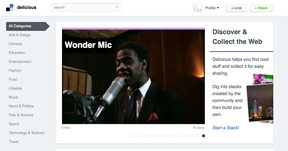 Although the civil rights movement of the 1960s was a struggle for many — both black and white, side by side — Martin Luther King, Jr. has come to epitomize it. There's a reason. And this reason is more subtle than obvious.
Although the civil rights movement of the 1960s was a struggle for many — both black and white, side by side — Martin Luther King, Jr. has come to epitomize it. There's a reason. And this reason is more subtle than obvious.Martin Luther King, Jr. didn't just speak to and for African Americans as some people like to think. He spoke for all Americans, regardless of color. And it's one of the reasons even King was often criticized by African Americans who wanted revolution over reformation. But it's how he built a broader base that didn't pit more people against each other and instead rallied people together.
The consensus builder and conscientious speaker.
Behind the scenes, King was notoriously quiet. He listened while others argued. And it often wasn't until everyone had finished that he'd quietly sum up everyone's feelings and then find a way forward. What he did, which is often overlooked today, is find the overarching objective of many people and focus the attention on the core as opposed to fractured special interests with specific needs.
As a speaker, he often succeeded at focusing this attention on the possibility of racial or socio-economic catastrophe while simultaneously holding out the promise of racial and socio-economic peace. He understood what people wanted, which was an equal opportunity. And he understood that they could obtain it, provided they had access to housing assistance, improved education, and income assistance.
But King saw something different while looking at these often cited three pillars toward reformation. Housing fluctuates on the whims on legislative bodies, educational reforms are entangled by bureaucratic stalls, and most income assistance proceeds with coordinated bias.
Not much has changed in his assessment, with most legislative solutions geared toward stymieing symptoms at great cost and lackluster results. And the one change that has occurred, would have no doubt prompted King to revisit his assessment. A guaranteed income, especially in a more competitive global environment where higher skilled workers compete for the same jobs, is no longer a cure for poverty.
But no matter what solution he might think up today, he hit on a tangible gain to solving the socio-economic challenges of his time by pointing to importance of lifting up the dignity of the individual. Martin Luther King, Jr. believed that when the decisions concerning an individual's life are in his own hands, when he has the assurance that income is relatively stable, and when he has the means to seek self-improvement, then personal conflicts — both domestic and communal — diminish.
What does that mean? It means that in regard to the strife caused by a plodding economy that has placed more people closer to poverty in the last four years, the psychological goals of the current administration are off the mark because they neither nurture individual choice, economic stability, nor the means to seek self-improvement. What is needed is a leader who can appeal to the psychological needs of people, delivering them not the bureaucracy of life management but the freedom to make choices that eventually lead them in an upward trajectory that mirrors their personal goals.
A gifted leader meets the less tangible needs of people.
It seems unlikely there will be a national reformation that recognizes the less tangible needs of people immediately, given one side feels a need to hand out temporary rewards stolen from those struggling to preserve their own labors and the other side is poised to stop them. Still, there are principles that organizational leaders can embed into their corporate cultures that will deliver a competitive advantage.
• The recognition that the newest employee and the oldest have equal value, just as the janitor is equally as indispensable as the executive officer.
• The understanding that economic stability doesn't come from national economic policy but rather an individual's regard to their contributions within an organization.
• The wisdom that more autonomy, along with greater responsibilities, is often viewed by people as a greater reward than monetary bonuses (especially irregular ones).
• The educational support needed to excel not because an association offers training but because the training is needed and can be immediately implemented (or at least tied to where it may be needed later).
• The merit in developing a culture that appreciates all experiences somehow have meaning beyond the monotony of meeting deadlines, regurgitating policy, or ticking off to-do lists.
I am sometimes perplexed that the simplest solutions are frequently overlooked by many organizations and equally at the stalled impetus of a nation. If you want to be a better leader or understand why Martin Luther King, Jr. had the wherewithal to appeal to a broad base of people, I suggest looking at how he listened not to their wants or needs but to their underlying desire to better themselves now while leaving a greater legacy to their children than they themselves inherited.
Can you do that for yourself? Your organization? Your country? If you can, then you may be moving in the direction of being a great leader, not someone who simply delivers the countable objective but someone that fulfills the less tangible outcomes that create a corporate or even national culture of excellence.
In observance of Dr. Martin Luther King, Jr. Day. Good night and good luck.






























